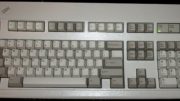I’m kind of surprised to be writing this article at this point. DIRECTV SWM technology debuted in 2008 and became the standard for all new installations in 2009. It’s kind of funny that people are still asking this question. In order to answer it, we need to back up a little bit and ask what SWM technology is and why people would choose it (or not.)
Traditional satellite TV
Traditional satellite distribution is often called “L-Band” by satellite professionals. The signals travel along the cable at frequencies from 950-2150MHz, which roughly corresponds to the international designation of “L-Band” which is 1,000-2,000MHz. This technology is used throughout the world. In most cases it’s easy to implement. However in the case of DIRECTV which has multiple satellite locations and multiple frequency ranges, L-Band satellite has its limitations.
The biggest problem comes in installation. With L-Band satellite it’s necessary to run a line from each receiver to a central point, for each tuner. This is a lot of copper. It’s expensive and time-consuming. With a Genie 2 DVR you would need 11 cables coming into a single box to make that happen.
In many countries, satellite TV is paid for by taxes and so there’s no monthly fee. In the US, satellite competes with cable TV and cable TV takes a lot less wiring. During the housing boom of the mid-2000s, DIRECTV management saw this as a problem and set out to develop a technology that was as easy and cheap to install as cable.
How SWM differs from regular satellite TV
The single-wire multiswitch is the heart of the SWM system. It acts as a sort of mix between a headend and a network switch, putting together up to 13 different program sources on a single wire and making sure every receiver and DVR gets what they need. Because all the signals travel over a single wire, you don’t need a line from every receiver. You can run one line and use splitters when you need them. This is a really, really superior way to getting signal around the home.
So why doesn’t everyone use SWM technology?
Well, almost everyone does. It’s extremely rare to see the older legacy technology in homes or businesses. However when it comes to mobile and marine dishes, it’s less common. The top manufacturers of marine and portable dishes were late in building SWM into their systems. Using a non-SWM system allows these much more expensive systems to work with multiple satellite providers. This makes those systems a little less affordable.
However, eventually the major manufacturers of auto-aiming dishes have begun moving to SWM. The only dishes that are left are the ones that are designed for a single receiver.
Should you use SWM technology?
Let me say this clearly: absolutely yes if you can. If you are using a mobile dish with only one output, you cannot use SWM technology. Otherwise, you should definitely be embracing SWM.
All receivers made since about 2012 are SWM-only. If you stay with a non-SWM workflow you’re limiting yourself to the H24 and HR24 receivers, which were originally made in 2010.
Receivers with SWM technology use less power, are easier to wire, and have advanced features that older receivers don’t. There is really no downside to upgrading and if your home is already wired it’s easy to convert to SWM using this guide.
It’s very surprising, as I said, that I still get this question but at this point it’s really limited to those folks who are upgrading their tailgate setup or marine setup. I understand that SWM doesn’t bring a lot of benefits in that scenario. You don’t need long cable runs or multiple receivers most of the time so SWM would seem to be an extra expense. It is, but it’s one you’ll be glad you made when the time comes to replace your receivers.





